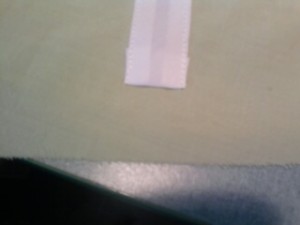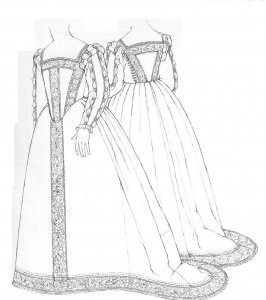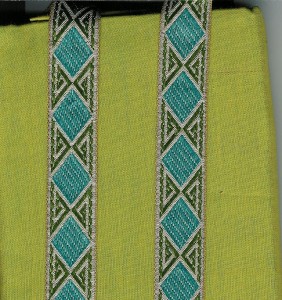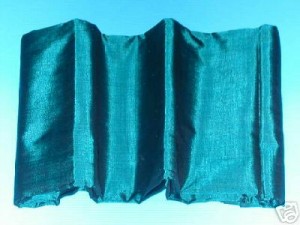First of all, I want to give props to Simplicity; they’ve really stepped up their game over the past 15-20 years with their period patterns. I’m sure it’s part whining from costumers like myself about inconsistencies and their marketing and R&D people telling the higher-ups about such sites as Reconstructing History and the plethora of period patterns. Or then again, it could be the success of The Tudors, which I have taken the first season to task for their costuming choices here.
The pattern pieces are very, very close to those in Juan De Alcega’s Tailor’s Pattern Book 1589. In fact, it’s close enough for me never to try to draft a farthingale from De Alcega’s book again. I’d really prefer to use my own tried and true, and Renn Faire tested pattern from Janet Arnold’s Patterns of Fashion, but time is of ye ole essence, so I’m making do with what I have readily on hand.
The only changes that I recommend making are:
- Make life easier on yourself, and do not sew up both side seams until after you sew on the casing for your hoop wire unto the right side of the fabric, stopping about 2-1/2 inches from edges on both sides. [picture below] After the hoop wire casings are sewn in place, then sew up the remaining seam, remembering to leave an opening as shown on the pattern.

- Why do step #1? It is much easier to pull the hoop wire out and re-insert it for washing, and any Rennie worth their weight in, um… well, they know that after a season of Faire farthingales need a good washing and unless you’ve used the plastic-coated hoop wire and have some way to hang the silly thing up, it’s just a lot nicer to be able to throw it into the washer and dryer, I’m just saying. (Also, now that I’ve used it, not a fan of the plastic-coated hoop wire, too flimsy for anything other than lightweight fabric, which this is for.)
- Spacing: if you plan to wear a heavy, jewel-encrusted velvet Noble’s gown, you will want to space your rows of hooping closer together. I recommend 4 inches rather than the near 6 as laid out on the pattern. Remember, the more hoop wire, the more stability, and the less likely that your new farthingale will collapse under the weight of your gown.
- Cut your hoop wire about 12 inches longer than recommended on the pattern and either use the little metal caps in the cut ends that are sold for this purpose or use the lazy girl’s choice to wrap the edges with a waterproof piece of bandage tape. This will allow enough extra hoop wire for overlap, and the extra gives you something to grab hold of when you are extracting said hoop wire for laundering and repair.
- Number your hoop wire. After you’ve cut it, use a Sharpie or other brand of permanent marker (color of your choice), and on the backside, write the row number on it. it will make life so much easier, especially if you are doing this at 3 AM. [Yes, I speak with first-hand knowledge on this, so just trust me.]
- Pre-wash both your fabric and twill tape — cotton and linen both are notorious for shrinking more than you would suspect, and nothing is more frustrating than finding out something is now four inches too short (or too small), and there’s nothing that can be done about it.
- I suggest using a 3/4 or 1 inch rather than the recommended 1/2 inch wide twill tape on the pattern envelope. Again, nothing worse than having the odds stacked against you before you’ve even started threading the hoop wire through its casing.
- Also, good a better quality fabric than the $1.99/yard muslin special. For personal costumes, I have “re-purposed” solid-colored bedsheets when I’ve up-sized our mattresses. A good quality percale top sheet can take the abuse and still give you many years of use as your farthingale base.
- Let your farthingale hang overnight or a week if time (and environment) allows before hemming it, putting the last hoop to allow the fabric to stretch itself out naturally. This way, there is no surprise “growth spurts.”
Now, will I use this pattern again? Maybe, maybe not …I haven’t decided yet.
Would I recommend: surprisingly: Yes. It will serve its country well.


